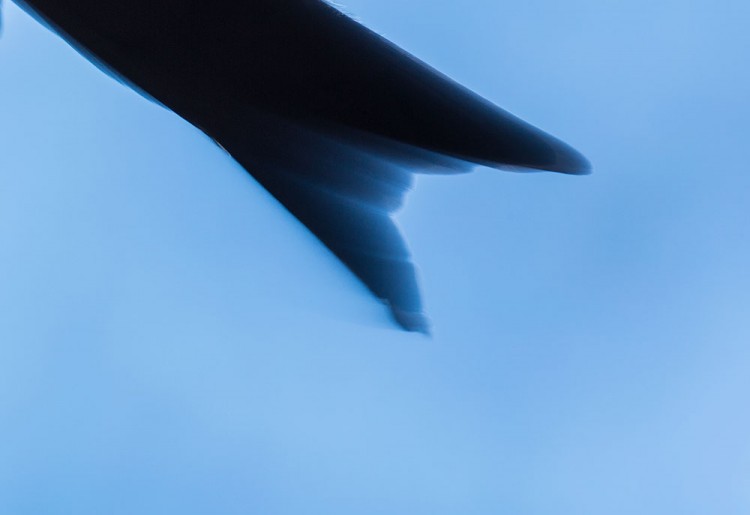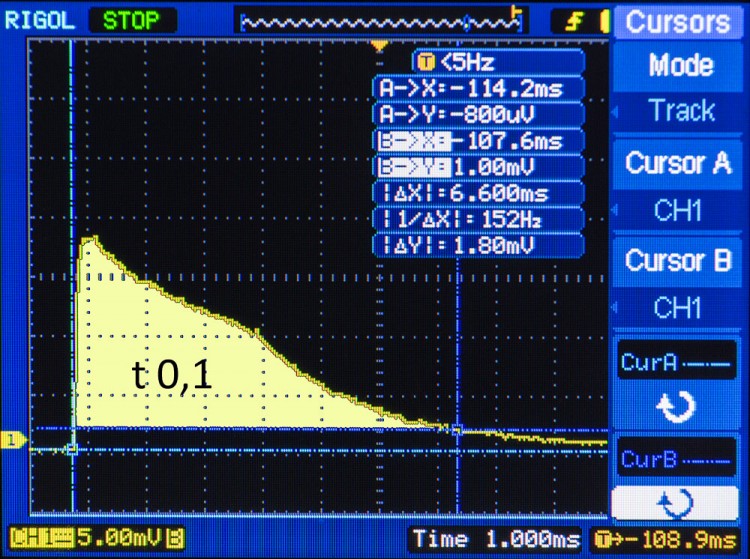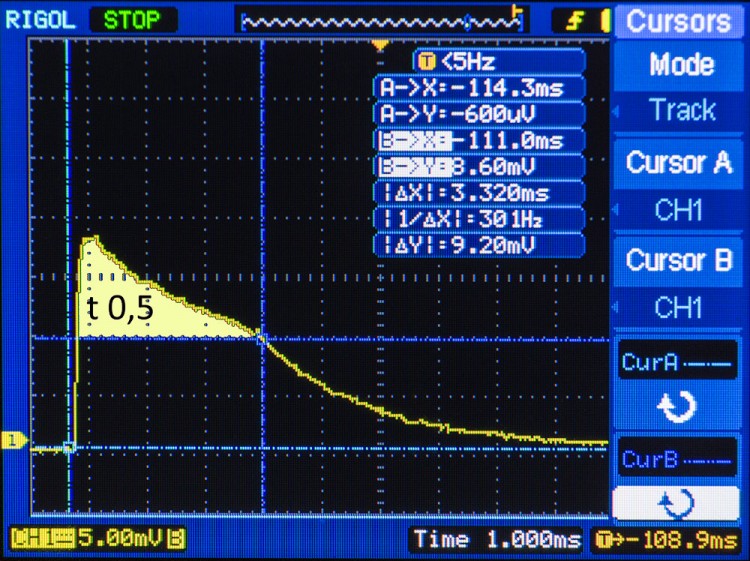flash duration
Flash duration is another important paramether of high speed photography system. Too slow duration means messy photo, like the one below:
100% crop shows clearly that bird moved during the duration of the flash pulse
but very short duration means very low power and therefore not much light to work with. So, let's start with some theory: flash duration is time that xenon tube in flash is iluminated. But since light output of xenon tube isn't constant, there are two standard times one can measure: t0,5 and t0,1.
t 0,1 marked with yellow block under the signal from canon 550EX at full power; you can see that even at t 0,1 sygnal is still not at null value represented by light blue horizontal line
t 0,5 marked on the same plot. It's obvious, that there is much more light represented by diagram showing t 0,1, but then
t 0,5 is more precise measurement
t 0.5 is obviouselly easier and more precise to draw, but t 0.1 represents more complete flas's output. Unfortunatelly it's a bit harder to measure accuratelly. So, how can one measure the leight of a pulse that lasts only couple milliseconds? The answere is a photodiode. When light strikes it, the semiconductor junction is irritated and as a result it generates either electric current or an electric voltage. Electric voltage is then measured with oscilloscope. I find a a circut and an explanation on Peter Mobbs site and steel some ideas. I had problems with determining the right value for load resistor: too little resistance, and I got no signal, but too much resistance means less sensitivity. Times are longer than the ones I find on internet, but for the prupose of comparisation, I think they are just fine. I also find two rotten apples in my set up: one can be seen in table Canon 540 EZ - 1. You can see, that leinght of the signal don't drop as I decreased power output. It looks like IGBT door on this flash is faulty, and this is the cause of the unsharp photos I was complaining about in my previous diary entry.
Here is actual table of t 0,1 in ms of flashes measured so far:
| Canon 540EZ - 1 | Canon 540 EZ - 2 | YN 560 III - A | YN 560 III - B | YN 560 III - C | YN 560 III - D | Canon 550 EX | Nikon SB26 | Nikon SB25 | Paul C. Buff Einstein "action" mode |
|
| 1/1 | 6,880 | 7,520 | 5,520 | 5,520 | 5,560 | 5,400 | 7,760 | 5,520 | 6,480 | 3,660 |
| 1/2 | 6,640 | 1,620 | 1,090 | 1,040 | 1,080 | 1,080 | 1,112 | 0,888 | 0,952 | 0,792 |
| 1/4 | 7,120 | 0,776 | 0,504 | 0,496 | 0,560 | 0,568 | 0,648 | 0,432 | 0,520 | 0,496 |
| 1/8 | 6,720 | 0,448 | 0,316 | 0,348 | 0,368 | 0,332 | 0,316 | 0,312 | 0,304 | 0,336 |
| 1/16 | 0,928 | 0,246 | 0,220 | 0,232 | 0,280 | 0,224 | 0,218 | 0,200 | 0,194 | 0,280 |
| 1/32 | 0,552 | 0,212 | 0,148 | 0,168 | 0,180 | 0,172 | 0,174 | 0,140 | 0,180 | 0,180 |
| 1/64 | 0,344 | 0,164 | 0,144 | 0,144 | 0,132 | 0,114 | 0,148 | 0,116 | 0,156 | 0,160 |
| 1/128 | 0,240 | 0,132 | 0,100 | 0,112 | 0,120 | 0,082 | 0,112 | / | / | 0,160 |
| 1/256 | / | / | / | / | / | / | / | / | / | 0,152 |
You can see, that leinght of the pulses at low power vary a bit and Einstein in "action" mode is very capable unit, especially if one keeps in mind, that it output is 600J at full power, whyle power otput of tipical hot shoe flash is 80J according to various internet sources. Since I'll be using flashes at 1/16 of full power and below, that means 37J against 5J or almost three EV. That is consisstent with my practical experience with Buff's Einstein and long throw reflector.








